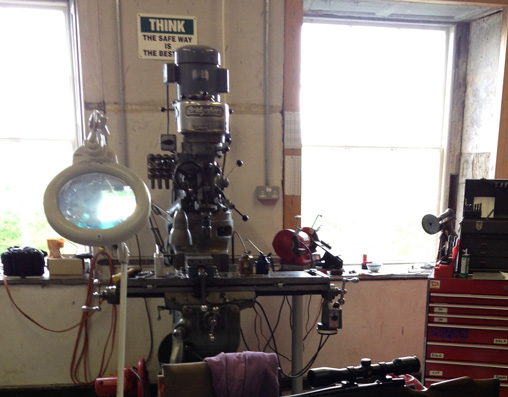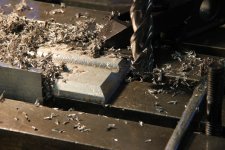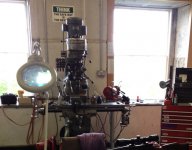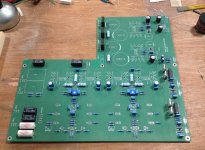I recently upgraded to Bryston BCD-3/HPA-1/XA25 connected to Aerial 7s. All interconnects are home brew silver/Teflon instrumentation. Absolutely stunning. I will be auditioning Devore Fidelity speakers in the coming months. Nevertheless the XA25 appears to drive the Aerial 7s without breaking a sweat.
I am currently making custom cables. As this group no doubt knows, the HPA-1 is singled-ended only. No balanced . The Six Moons review quoted Jam Somasundram; "By the very nature of its design, it will drive long runs of cable." I am building 12 foot interconnects between the HPA-1 and XA25. The effective gauge is 17g center and 17g return with singled ended shield. When Jam was quoted "long runs of cable" do you think 12 feet is within reason? Thanks.
I am currently making custom cables. As this group no doubt knows, the HPA-1 is singled-ended only. No balanced . The Six Moons review quoted Jam Somasundram; "By the very nature of its design, it will drive long runs of cable." I am building 12 foot interconnects between the HPA-1 and XA25. The effective gauge is 17g center and 17g return with singled ended shield. When Jam was quoted "long runs of cable" do you think 12 feet is within reason? Thanks.
Last edited:
Don't worry Jeff, the ones in the Cubie2 are actually normal cascodes, not folded.Oh no. Now I have to figure out what a "folded cascode" is....
Hpa-1 is high current for a preamp, since it was designed for headphones. Shouldn’t be an issue at all even with 24g interconnects.
17awg is pretty big for an rca cable. Maybe too big?
Thank you for commenting. "too big?" Silver plated Teflon insulated/jacket instrumentation cable that I have used for decades. There is so much psychology. To my ears, this cable outperforms lamp cord. And it only costs a thousand times more than lamp cord. WBT and Furutech. I use varying configurations of the same cable for power, interconnects, and speakers. Thus, 17 gauge is simply what I have configured (2X20) in both directions for interconnects. I do not use the shield for a return.
Last edited:
Thank you for suggesting as much. I am so pleased with the HPA-1/XA25 that I am thinking of putting a second set in another room - 18X24. An XA25 on a wall shelf at the far end and an HPA-1 at the near wall. About a 35 foot RCA interconnect. But first, I must extend an addition. Adjusting to a new (to me) house.I should think 120 feet would still be within reason.
As a general comment. My migration toward Pass is largely attributable to DIYAudio. In my past, I built DC coupled instrumentation amplifiers fed by 30M input impedance. My noise problems have been local radio stations and failing ballasts 50 ft down the hall. And ground loops. Hence, I strive for single point grounding. Perhaps not necessary for audio work. Not a fan of circuit boards. I have had about 300 ft of instrumentation cable on the shelf that I now use for audio work - about 10 bucks a foot. Whatever is left over, I want in the casket.
The HPA-1/XA25 combination is more black than anything I have not heard. Haunting.
Last edited:
I got a bit of time to start on the front plate of my DIY HPA-1.
Copying the Pass Labs version isn't an option because my mill is the old-fashioned kind (I don't even have digital readout), and the setup charge for anodising single units is too high (which means an off-the-shelf volume know). But I am trying to keep it in the same vein.

Cheers,
Jeff.
Copying the Pass Labs version isn't an option because my mill is the old-fashioned kind (I don't even have digital readout), and the setup charge for anodising single units is too high (which means an off-the-shelf volume know). But I am trying to keep it in the same vein.
Cheers,
Jeff.
Attachments
No, not a drill. An old 1950's Bridgeport milling machine. The sides were done with a 45º milling cutter (basically a big countersink), and the groove was done with a ball-end end-mill.
I cut it to size first on my table saw with a 120-tooth carbide blade.

I cut it to size first on my table saw with a 120-tooth carbide blade.
Attachments
OK, let's talk about matching.
The input JFETs I assume should be matched as closely as possible (given the constraints of N matching). Presumably Idss is a good enough proxy for gm.
matching). Presumably Idss is a good enough proxy for gm.
The cascodes are just "voltage umbrellas", so I'm guessing no matching required there?
The current mirrors are going to mirror the current through the JFETs, so I'm guessing don't need to be matched top-to-bottom. However, I think the transistors within each current mirror need to be matched for hFE in order to get a 1:1 mirroring?
The servo will zero the offset, so it seems the output MOSFETs don't need to be matched. But will matching them make their distortion profiles more consistent or anything?
Thanks,
Jeff.
The input JFETs I assume should be matched as closely as possible (given the constraints of N
The cascodes are just "voltage umbrellas", so I'm guessing no matching required there?
The current mirrors are going to mirror the current through the JFETs, so I'm guessing don't need to be matched top-to-bottom. However, I think the transistors within each current mirror need to be matched for hFE in order to get a 1:1 mirroring?
The servo will zero the offset, so it seems the output MOSFETs don't need to be matched. But will matching them make their distortion profiles more consistent or anything?
Thanks,
Jeff.
- Home
- Amplifiers
- Pass Labs
- Pass HPA-1, what do we know?



